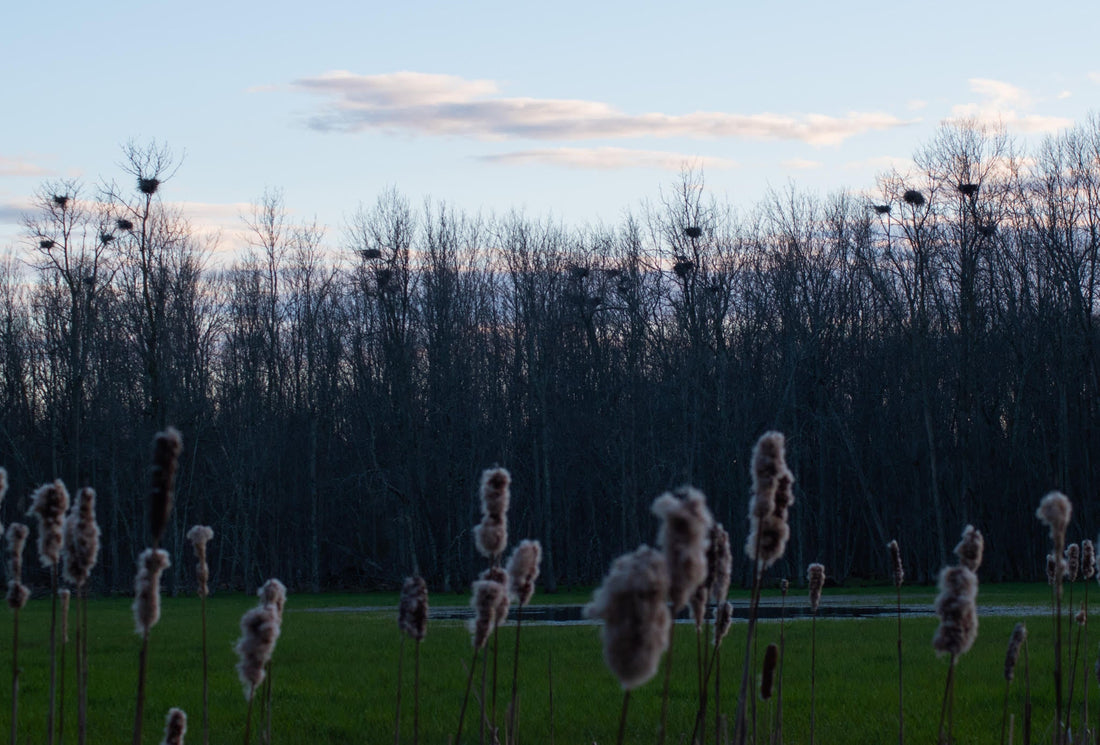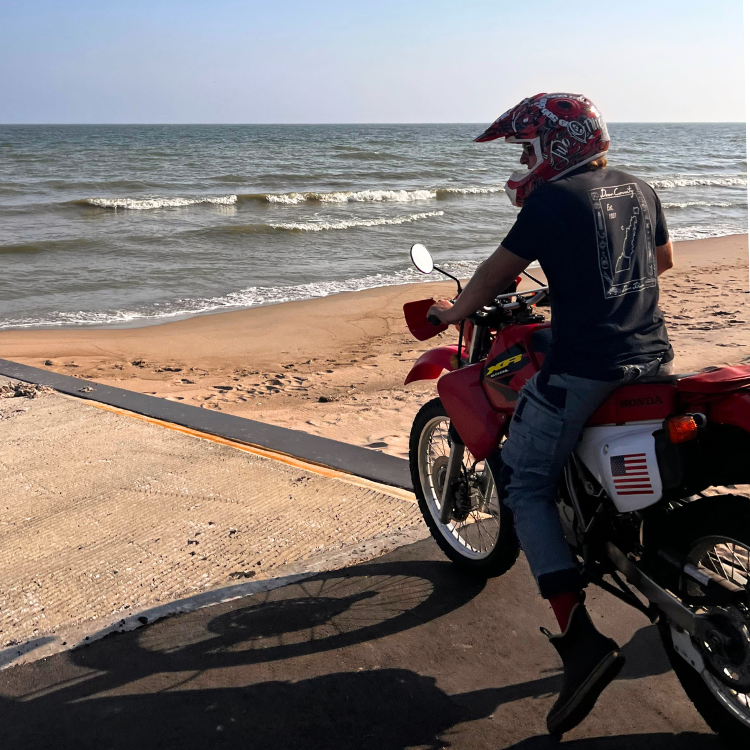
Where Your Feet Get Wet
Share
Author: Rex Meikle
Some of my most treasured childhood memories were made deep in the wetlands of Clay Banks Township in southern Door County, Wisconsin. We’d jump from exposed root, to downed log, grasping for flimsy cedar limbs, trying desperately to avoid the all surrounding water. Inevitably, we’d get our feet wet. Sometimes we’d get nearly all of our clothing wet. But always, we’d have fun in the swamp behind my buddy’s house. The vast array of animals, unpredictable terrain, and ease of hiding from our parents and one another were all reasons why we were drawn to the wetland.
As I grew in age my interest in the natural world compounded. I read everything on the topic I could find, spent countless hours hunting, trapping, and fishing Door County, and enrolled in many courses to learn more about the wild world around me. Two mentors of mine brought me along for the Ridges Sanctuary’s Festival of Nature classes a few consecutive years. In one of those classes, we visited the Dunes Lake Restoration Project. The area was new to many attending the class, but I had already become acquainted while paddling its waters in pursuit of waterfowl. One of the course instructors was a seasoned biologist who had spent his career improving our nation's wetlands. Although he lacked the accessories wealthy men adorn themselves with, his smile and tone revealed the dividends his life experiences had paid on his memory. He spoke with great satisfaction and pride about the work he’d spent his career dedicated to. He believed that wetlands were some of the most important and beautiful ecosystems. The biologist emphasized how unique and ecologically significant the fens, bogs, and swamps of Door County are. Although they aren't idyllic lakes filled with loons and speed boats like those the northern region of our state is littered with, their beauty and importance are undeniable. He noted the prevalence of biodiversity supported by wetland habitats. Additionally, he stated how wetlands sequester a significant amount of carbon. In these dense wet environments plants and animals can thrive with little human pressure.
As I continued to grow as a student of the natural world, I learned many more unique qualities of the wetlands I admire so much. I learned how old whitetail bucks spend most of their later years in the thick wet cover of swamps. Deep in these areas, they can live where few hunters trek and can hear threats approaching as branches break and water splashes. I learned that navigating these areas is much easier when you have the agility and size of your childhood body. I learned from authors such as Aldo Leopold that the term “drain the swamp” is more than a political jargon, but was a staple agricultural practice that had been implemented for thousands of years. I learned that many people, countries, and policymakers don’t see value in the wetlands of our planet. In a world energized with the idea of becoming “carbon neutral,” I can’t imagine a more simplistic and effective carbon-capturing strategy than promoting the preservation, restoration, and reclamation of wetlands.
Thankfully, Door County is an area that has a long tradition of preserving, restoring, and reclaiming its wetlands. There are countless publicly accessible Door County wetlands, including Door County Land Trust’s Kellner Fen Natural Area, The Nature Conservancy's Shivering Sands Preserve, Gardner Swamp Wildlife Area, and the Gibraltar-Ephraim Swamp. These wetlands are home to many flora and fauna, such as whitetail deer, Hine’s emerald dragonfly, northern pitcher plants, northern pike, and migratory birds such as great egrets. The best times to visit these areas in my opinion are in the dead of the winter, and early spring when the cold air bites your face instead of the mosquitoes. I love spending time in the wetlands during the coldest parts of winter because wetlands are far more accessible when frozen solid. During these cold days, you may find a wandering coyote, snowy owl, or a whitetail shed antler if you’re lucky. These cold visits are quiet, pristine, and peaceful. Early spring is another world. The wetland becomes loud with spring peeper frogs, migratory birds, and the sound of water splashing as you try desperately to find solid footing. Although navigation becomes troublesome during early spring, the reward for your effort is seeing and hearing life crawl out, fly in, and swim up to Door County. No matter when or how you explore Door County’s wetlands, you cannot blame me when your feet get wet.

Did you enjoy this article? Consider supporting Door Born by purchasing from our online store. Door Born is a 1% business, where 1% of sales are donated towards socially and environmentally sustainable programs within Door County. We donated our 1% to Door County Land Trust in 2022.



